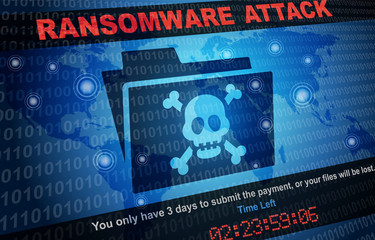Explore the rising phenomenon of deepfake AI and its impact on cybersecurity. Learn how deepfake technology works, its real-world applications, and the threats it poses—from fake news and identity theft to financial scams. Discover expert tips to detect deepfakes, safeguard your digital identity, and stay ahead in the fight against AI-driven cyber threats. Perfect for readers looking to understand and navigate the challenges of deepfake technology in today’s digital age.

Introduction
Artificial Intelligence (AI) has revolutionized the modern world, introducing groundbreaking innovations across diverse fields. Yet, not all advancements are benign. One such double-edged innovation is deepfake technology, which uses AI to create eerily realistic videos, images, or audio. While exciting for entertainment and education, deepfakes bring significant cybersecurity risks that demand attention. This article explores deepfake technology, its risks, and how you can protect yourself in the face of these evolving cyber threats.
What Are Deepfake?
Deepfakes are synthetic media created using AI, particularly through Generative Adversarial Networks (GANs). This technology enables machines to replicate human features, voices, and movements with astounding precision. These fabricated media pieces are often indistinguishable from authentic ones, making them a powerful yet dangerous tool in the wrong hands.
How Deepfakes Work
The creation of deepfakes involves two critical steps:
- Data Collection: Large datasets of high-quality images, videos, or audio recordings of the target are collected. The quality and quantity of data directly impact the authenticity of the output.
- Algorithm Training: GANs consist of two neural networks: the generator, which produces synthetic content, and the discriminator, which evaluates its authenticity. Over iterative training, the generator becomes skilled at creating highly convincing fake content.

Real-World Uses of Deepfake Technology
Not all uses of deepfakes are malicious. Some positive applications include:
- Film and Media: Deepfake technology is used to create realistic visual effects, including bringing historical figures or deceased actors to life on screen.
- Education: Simulations powered by deepfakes enhance medical, legal, and other professional training programs.
- Art and Creativity: Artists use deepfake tools to explore new creative mediums and push digital storytelling boundaries.
Despite these benefits, the potential for harm is alarming.
Cybersecurity Risks of Deepfake AI
1. Fake News and Disinformation
Deepfakes can spread false narratives, especially in politics. Fake speeches or interviews attributed to public figures can mislead audiences, influencing elections or sowing discord.
2. Financial Scams
Imagine receiving a call or email with your boss’s voice directing you to transfer money. Deepfake audio can make scams like Business Email Compromise (BEC) more persuasive and dangerous.
3. Identity Fraud
Deepfakes can bypass biometric security systems, such as facial recognition or voice verification, leading to breaches of sensitive data.
4. Harassment and Blackmail
Criminals can create fake explicit videos to intimidate or extort individuals, causing significant emotional and reputational damage.
How to Spot and Fight Deepfakes
Detection Tips
- Pay Attention to Details: Look for subtle inconsistencies like unnatural eye movements, irregular blinking, or mismatched shadows.
- Use Deepfake Detection Tools: Tools like Microsoft’s Video Authenticator or Deepware Scanner can help identify manipulated content.
- Verify Sources: Always cross-check information from multiple credible sources.
Countermeasures
- Public Awareness: Educating people about the existence and risks of deepfakes is crucial.
- Technological Defense: Companies must invest in AI solutions to identify and flag deepfake content.
- Stronger Legislation: Governments worldwide need to establish stricter regulations to penalize malicious deepfake creators.
The Road Ahead for Deepfake Technology
Deepfake AI is evolving rapidly. While it has immense potential for creativity and education, it also demands vigilance and responsible usage. The cybersecurity industry, governments, and individuals must work together to mitigate risks while embracing its benefits.
Learn More
Explore these resources for further understanding:
- Microsoft AI on Deepfake Detection
- Understanding GANs by MIT Technology Review
- Ethical Concerns of Deepfake AI by Stanford
Deepfakes are a powerful reminder of technology’s dual nature. While they offer immense creative opportunities, their misuse poses serious threats. Staying informed and vigilant is the key to navigating this new digital frontier safely.
Table of Contents
More
- IoT Security Demystified : Why Your Smart Devices Could Be Hackers’ Next Target 25
- CVE Explored: Understanding Common Vulnerabilities and Exposures for Better Cybersecurity 24
- Cyberattack on Japanese Airlines: How Hackers Grounded Japan’s Skies! 2024
- Shocking Chrome Extension Scandal: 600,000 Users’ Data Exposed in Massive Breach!
- AI-Driven Cyber Threats: Understanding and Mitigating the Risks of Artificial Intelligence in Cybersecurity
- Quantum-Resistant Cryptography: Protecting Data in the Age of Quantum Computing 15
- Multi-Factor Authentication (MFA): Strengthening Security with Layers of Protection 14
- Zed Attack Proxy (ZAP): A Hacker’s Best Friend 13
- What is an IDOR Attack? A Beginner’s Guide to Insecure Direct Object References 12
- VAPT Demystified: A Complete Guide to Vulnerability Assessment & Penetration Testing 10
- Hackers Playbook: 15 Common Cyber attack Techniques
- 9 Career Job in Cybersecurity : A Comprehensive Guide




